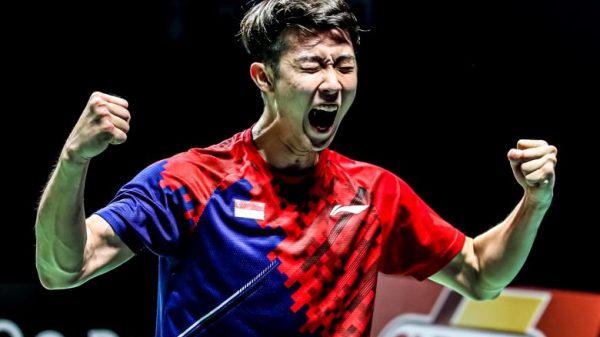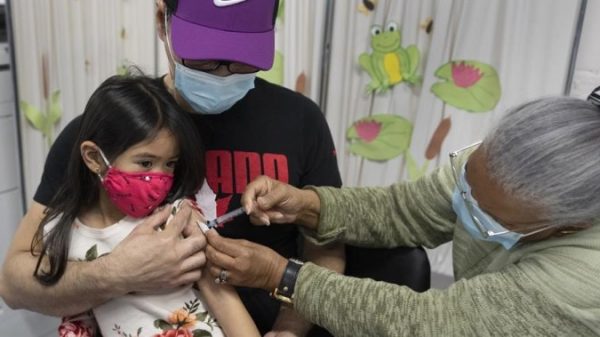SINGAPORE – Singapore Gymnastics unveiled a new set of body confidence guidelines on Wednesday (Oct 27) in a move to help gymnasts, their families, coaches and staff better understand the subject of body image and how it affects individuals.
It hopes that the guidelines, which comprise four main pillars, can help tackle the risks of poor body image, eating disorders and mental health issues in the sport.
The four pillars are:
a. Everyone has a role
b. Language and communication matters
c. Supporting positive nutrition
d. Safety in tracking growth and development
The association stressed that prevention and early intervention across whole groups and organisations is key to developing a shared understanding of what best supports athletes.
Singapore Gymnastics’ general manager Karen Norden said: “These guidelines are the cornerstone of promoting a balanced daily training environment where the athletes’ health and wellbeing are paramount.
“We all know in the current landscape there is a lot of talk about body image and sport. Singapore Gymnastics wants to take the lead on this important topic and feel it is our responsibility to educate the community as a whole on how we can work together so athletes have a positive body image for life.”
The latest guidelines come at a time when gymnasts worldwide are breaking their silence about the culture in a sport that has tolerated the abuse – mental, physical and sexual – of athletes. Netflix documentary Athlete A and the #GymnastAlliance movement last year have also emboldened athletes globally to speak up about the abuse they endured during their sporting careers.
National gymnasts Leah Chew and Nadine Joy Nathan welcomed the new guidelines, acknowledging that the aesthetic nature of gymnastics often results in athletes feeling pressured to lose weight. Last year, former gymnast Kathryn Chia also spoke up about her experience, revealing the extremes she went to in order to maintain a lean and trim figure.

Being in leotards and having everyone’s attention on them during competition also adds to the fear of “looking fat”, said Nathan, and this problem can worsen as athletes’ bodies change during puberty.
Chew, 19, and Nathan, 21, also added that these body image issues can affect athletes in the long term, even when their sporting careers are over.
“We were all expected to fit into a certain mould, that was that of a ‘typical gymnast’s body’, regardless of our genetics and different body types. It was not uncommon, even as teenagers, to be weighed, which led to many of us being incredibly conscious of food in general,” said Nathan, who represented Singapore at the 2014 Youth Olympic Games and is a three-time SEA Games medallist.
“These mindsets affect the transition for those who eventually leave the sport, as changes in our exercise intensity and hours decrease, leading to very visible changes that inevitably shifts the focus from nutrition to more unhealthy habits that could continue on past the gymnastics career.”
Both Chew and Nathan believe the guidelines will help steer the focus away from athletes’ appearances and create a healthier environment for them to train and compete in.
Chew, who competed at the 2019 SEA Games, said: “More knowledge on body confidence and body image will be shared on how one can help themselves or help others who suffer from (poor) body image, and that can help foster and boost a supportive community.”
Nathan added: “These guidelines will help those in the community to shift their focus towards helping gymnasts obtain the necessary nutrition and to focus on the appropriate measures for each gymnast and their body to keep them healthy and happy. It also would make each individual think before making sweeping remarks or comments that usually have unintended consequences.”
Supporting the release of these guidelines, Dr Jamie Lye, the National Youth Sports Institute’s head of sport nutrition, said: “Poor body image can be detrimental to an athlete’s performance if unaddressed. Youth athletes undergo a stage of puberty where their bodily changes may leave them vulnerable to poor body image and eating disorders.
“These guidelines help create a supportive environment for youth athletes to navigate their bodily changes and build a positive body image.”
In conjunction with these guidelines Singapore Gymnastics will also be conducting body resilience workshops for coaches and athletes in the high performance pathway, starting with a session on Saturday with those in the national squad.
It also rolled out a new nutrition programme earlier this month and launched a psychology programme last year.
Sport Singapore (SportSG) has also ramped up its efforts in recent times to create a safe sporting environment for athletes. The national sports agency has over 260 trained safeguarding officers for SportSG partners, including the national sports associations (NSAs) and Institutes of Higher Learning. Sixty-three of the 64 NSAs have at least one officer.
The Safe Sport Commission was also launched in 2019 to clamp down on harassment and misconduct against athletes.
Summary of the key guidelines:
– Everyone has a role: Ensuring that everyone in the community, from coaches and staff, parents and families, to gymnasts can play a part in creating an environment where athletes feel positively about their bodies.
Being conscious about the words used in conversations and being open to having conversations about body image, which include normalising changes that the body goes through over time, as well as being aware of signs of negative body image, are given as examples of actions that can help cultivate a more positive culture in the sport.
– Language and communication matters: A more in-depth look at how to better communicate with athletes. The new guidelines emphasise avoiding comparisons and appearance-based comments and giving feedback with kindness and respect. Another recommendation was that topics on bodies or eating habits should not be discussed in front of gymnasts.
– Supporting positive nutrition: Conversations about food and eating should be positive, while nutrition education and advice should be delivered only by an experienced sports dietitian.
– Safety in tracking growth and development: Any assessment or tracking over time should only be conducted with a clear rationale, alongside carefully assessing risks and benefits to the gymnast. Any monitoring or tracking of a gymnast’s body, including weight, height, skinfolds or physique assessments such as Bioelectrical Impedance Analysis, should only be conducted by an experienced and certified anthropometrist, after both education has been provided and written consent from gymnasts and a parent and/or guardian has been obtained.













































